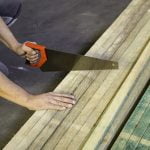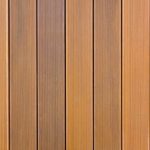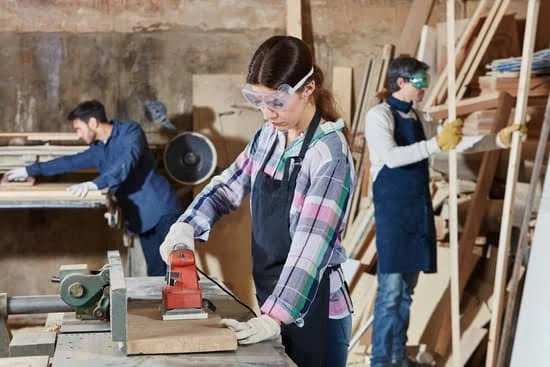Woodworking is a versatile and rewarding craft that allows individuals to create functional and decorative pieces from wood. One popular project for woodworking enthusiasts is making shallow bowls. Shallow bowls have a unique appeal and versatility, serving both decorative purposes and practical uses such as holding small items or serving as stylish centerpiece. In this article, we will explore the process of making shallow bowls through woodworking, providing step-by-step instructions and tips for success.
Before delving into the woodworking process, it is crucial to understand the importance of using proper tools and materials. Woodworking requires precision and attention to detail, and having the right tools can make all the difference. Additionally, choosing high-quality materials is essential for achieving a successful outcome. We will discuss these aspects in more depth throughout the article.
Making a shallow bowl in woodworking involves several steps that require careful preparation, planning, and execution. From selecting the perfect piece of wood to finishing and sealing your creation, each stage involves its own set of techniques and considerations. In this article, we will guide you through the entire process, offering valuable insights into each step along the way.
Whether you are a beginner looking to embark on your first woodworking project or a seasoned woodworker wanting to expand your skillset, making shallow bowls can be an enjoyable and fulfilling endeavor. So gather your tools and get ready to unleash your creativity as we dive into the art of making shallow bowls through woodworking.
Preparing the Wood
Selecting the right type of wood is crucial when making a shallow bowl in woodworking. The type of wood you choose will affect the overall appearance and durability of your final product. Some popular choices for shallow bowls include maple, walnut, cherry, and birch. Each type of wood has its own unique grain pattern and color that can enhance the beauty of your bowl.
When selecting the perfect piece of wood for your shallow bowl, there are a few things to consider. First, look for wood that is free from defects such as knots, cracks, or warping. These imperfections can weaken the structure of your bowl and make it more difficult to work with. Additionally, consider the size and shape of the wood. Make sure it is large enough to accommodate the size of bowl you want to create.
Once you have chosen your piece of wood, it’s important to prepare and stabilize it before beginning any shaping or carving. This will help prevent cracking or warping as you work on your shallow bowl. One method for preparing the wood is called “green turning,” which involves cutting the wood while it is still fresh and moist.
Another option is to dry the wood before working on it, which can take several weeks or months depending on the thickness of the piece. Drying will remove moisture from the wood and make it more stable for carving.
In addition to selecting and preparing the perfect piece of wood, having the right tools and materials is essential for successful woodworking. Some tools you may need for preparing the wood include a bandsaw or jigsaw for rough cutting, a lathe for shaping, gouges or chisels for hollowing out, clamps for securing pieces together during drying or glue-up processes, sandpaper or sanding pads for smoothing surfaces before finishing touches are applied.
By carefully choosing your wood and properly preparing it using appropriate tools and techniques like green-turning or kiln-drying methods beforehand ensures that your shallow bowl woodworking project will turn out beautifully and be sturdy enough to last for years to come.
Designing Your Shallow Bowl
When it comes to making a shallow bowl in woodworking, designing your bowl before starting is an essential step. Taking the time to sketch and plan out your design not only helps you visualize the final product but also ensures that you create a bowl that meets your expectations. In this section, we will discuss the importance of designing your shallow bowl, tools and techniques for sketching, and tips for considering size, shape, and style.
First and foremost, designing your shallow bowl allows you to have a clear idea of what you want to achieve. It gives you the opportunity to experiment with different shapes, sizes, and styles on paper before committing them to wood. By drawing your design beforehand, you can make adjustments as needed and avoid costly mistakes during the woodworking process. Whether you prefer a traditional or modern design, sketching helps bring your vision to life.
To help with the sketching process, there are several tools and techniques you can utilize. Pencils are great for initial sketches as they allow for easy erasing and refining of details. Once you have a basic outline drawn, using tracing paper can be helpful to try out different variations without starting from scratch each time. For those who prefer digital methods, there are even online programs available that allow you to create 3D models of your design.
When considering the size, shape, and style of your shallow bowl, there are a few factors to keep in mind. Think about how the bowl will be used – whether it’s purely decorative or functional – as this will impact its dimensions. Consider the proportions of the design in relation to its intended purpose.
Additionally, take into account how the grain pattern of the wood will interact with your design choices. Emphasizing or working with natural features in the wood grain can enhance the overall aesthetic appeal of your bowl.
Marking and Cutting
When it comes to making a shallow bowl in woodworking, accurately marking and cutting is a crucial step in creating the basic shape. This section will guide you through the process of marking the center, shaping the outer perimeter, and cutting out the initial shape of your bowl.
Marking the Center
Before you can begin shaping your shallow bowl, it is important to mark the center of your piece of wood. This will serve as a reference point for all other measurements and cuts. One way to find the center is by drawing diagonal lines from corner to corner on a square or rectangular piece of wood. The intersection of these lines will be the center point.
If you are working with a round or irregularly shaped piece of wood, you can use a compass to find the center. Simply set your compass to half the diameter of your wood, then draw an arc across the top and bottom or edges of the wood. Repeat this process from two different directions until both arcs intersect at a single point – that’s your center.
Shaping the Outer Perimeter
Once you have marked the center, it’s time to shape the outer perimeter of your bowl. You can do this by using a pencil or marker to trace your desired shape directly onto the piece of wood. Shallow bowls can be round, oval, square, or any other shape that suits your design preference.
To create smooth curves when shaping an oval or irregularly shaped shallow bowl, consider using flexible templates made from thin strips of plywood or plastic. These templates can be bent along their curved edge and used as a guide for marking smooth curves onto your workpiece.
Cutting out the Initial Shape
With your design marked on the wood, it’s time to cut out the initial shape of your shallow bowl. Depending on its size and shape, various tools can be used for this step such as a band saw, jigsaw, or coping saw. Take precautions and wear safety goggles and other protective equipment to prevent injuries.
Carefully follow the marked lines while cutting, removing excess wood from around the outer perimeter of your bowl shape. Take your time and make slow, deliberate cuts to ensure accuracy. It is generally advisable to leave some extra material outside of the marked lines to allow for further shaping and refinement in later steps.
By effectively marking and cutting the basic shape of your shallow bowl, you have set the foundation for creating a beautiful woodworking piece. In the next section, we will delve into the techniques for hollowing out the bowl and bringing it closer to its final form.
Hollowing the Bowl
Once you have marked and cut the basic shape of your shallow bowl, the next step is to hollow out the inside. Hollowing the bowl requires careful carving techniques to achieve the desired depth and shape while maintaining structural integrity. In this section, we will explore step-by-step instructions for hollowing out the bowl and discuss the tools and methods that can be used.
To begin hollowing the bowl, start by creating a pilot hole at the deepest point of your design using an auger bit or a drill. This will serve as a guide for establishing the maximum depth of your bowl. Slowly carve away excess wood, working from the center towards the edges, using a gouge or a hook knife. Take care to remove small amounts of wood at a time to avoid any splitting or cracking.
As you progress with hollowing, periodically check your depth and adjust accordingly to achieve your desired result. This can be done by using calipers or other measuring tools to measure both wall thickness and overall depth. Remember that it is better to err on the side of caution by removing less wood initially rather than risking going too deep too quickly.
Throughout this process, it is crucial to maintain a sharp cutting edge on your tools as it will enable clean cuts and reduce tear-out. Regular sharpening or honing of your hand tools will ensure efficient wood removal without compromising control.
When you are satisfied with the initial hollowed shape, use scraping tools such as round-nose scrapers or curved gouges to refine and smooth out any tool marks or imperfections on the interior surface of the bowl. Take care not to remove too much material during this stage as it can alter the overall shape and dimensions of the bowl.
Hollowing out a shallow bowl requires patience, precision, and attention to detail. By following these step-by-step instructions and utilizing appropriate carving techniques, you will be able to create a beautifully shaped and functional interior for your wooden bowl.
Smoothing and Sanding
One of the most important aspects of creating a stunning shallow bowl in woodworking is achieving a smooth and flawless finish. This section will guide you through the process of smoothing and sanding your bowl to achieve a beautiful end result.
To begin, it is crucial to start with the right tools and materials. You will need various grits of sandpaper, ranging from coarse to fine, to gradually smooth out the surface of your bowl. A sanding block or pad can be used to provide even pressure and ensure an even finish. Additionally, having a dust mask or respirator is recommended to protect yourself from inhaling wood dust during the sanding process.
Start by using coarse-grit sandpaper, around 80-100 grit, to remove any tool marks or rough surfaces on your bowl. Be sure to work in the direction of the wood grain for the best results. Gradually move up to finer grits of sandpaper, such as 150-220 grit, as you progress. This will help to remove smaller imperfections and create a smoother surface.
After each sanding session, it is important to wipe down your bowl with a damp cloth or tack cloth to remove any residue before moving on to the next grit of sandpaper. This ensures that you are working with a clean surface and prevents particles from getting trapped in the wood grain.
Once you have achieved a relatively smooth surface with finer grits of sandpaper, you can choose to further enhance the finish by using ultra-fine grits such as 320-400 grit or higher. This will give your shallow bowl an exceptionally silky feel and appearance.
Remember that patience is key during this process – take your time and work gradually through each stage of sanding. The end result will be worth it when you have a beautifully finished shallow bowl that showcases your woodworking skills.
| Sanding Grit | Surface Smoothness |
|---|---|
| 80-100 | Removes tool marks and rough surface |
| 150-220 | Removes smaller imperfections, creates a smoother surface |
| 320-400 or higher | Gives an exceptionally smooth and silky finish |
Finishing and Sealing
When it comes to creating a shallow bowl in woodworking, finishing and sealing the bowl is a crucial step to protect the wood and enhance its natural beauty. Finishes not only provide a protective layer but also bring out the richness of the wood grain, adding depth and character to your shallow bowl.
In this section, we will explore different types of finishes suitable for wooden bowls, guide you on how to properly apply and seal the surface, and provide tips on enhancing the natural beauty of the wood grain.
There are various types of finishes available for wooden bowls, each offering different levels of protection and aesthetic appeal. One popular option is food-safe mineral oil or beeswax. These finishes penetrate into the wood’s pores, creating a durable and moisture-resistant barrier without altering its natural appearance. They are safe for food contact, making them an excellent choice for functional shallow bowls such as salad bowls or serving dishes.
Another popular finish option is a polyurethane varnish. This type of finish provides a glossy or satin sheen while protecting the wood from stains and scratches. It creates a more durable barrier compared to oil-based finishes, making it suitable for decorative shallow bowls that won’t come into contact with food.
To apply the finish to your shallow bowl, start by sanding the surface smooth using progressively finer grit sandpaper. This will ensure a flawless result once you start applying the finish. After sanding, remove any dust particles from the wood’s surface using compressed air or a clean cloth.
Next, apply the chosen finish according to the manufacturer’s instructions. Use a brush or cloth to evenly spread thin coats of finish over the entire surface of your shallow bowl. Allow each coat to dry completely before applying subsequent layers. Depending on your desired level of protection and aesthetics, you may need to apply several coats of finish.
Once all coats have been applied and dried thoroughly, lightly sand the surface with a fine grit sandpaper, such as 220-grit, to smooth out any imperfections. Finally, apply a final coat of finish and allow it to dry completely. This last coat will give your shallow bowl a beautiful and durable finish that will protect it for years to come.
In order to enhance the natural beauty of the wood grain, you can consider using a wood stain before applying the finish. Stains can add depth and richness to the color of the wood, highlighting its unique characteristics. After staining, be sure to seal the surface with an appropriate finish.
Adding personal flair and decorative elements to your shallow bowl is also an option in this final stage. You may choose to add embellishments such as woodburned designs, inlay materials, or even handles for added functionality or visual interest. The possibilities are endless when it comes to customizing your shallow bowl.
By properly finishing and sealing your shallow bowl, you not only protect it from moisture and wear but also showcase the natural beauty of the wood. Take time to experiment with different finishes and techniques to create stunning bowls that will be cherished for years to come.
| Type of Finish | Benefits | Considerations |
|---|---|---|
| Mineral Oil/Beeswax | – Food-safe for functional bowls
| – May require more frequent reapplication
|
| Polyurethane Varnish | – Provides durable protection
| – Not food-safe
|
Final Touches
Optional techniques for adding decorative elements
Once you have completed the main shaping and sanding of your shallow bowl, it’s time to consider how you want to add a personal touch and make your creation truly unique. There are several optional techniques you can use to add decorative elements to your bowl.
One popular option is wood burning or pyrography, which involves using a heated tool to burn designs or patterns onto the surface of the wood. This can be a great way to create intricate designs or personalize the bowl with names or meaningful symbols.
Another option is inlay work, where different materials such as metal, stones, or even other types of wood are added into carved recesses in the bowl. This can create stunning visual effects and add texture and contrast to your piece. Inlay work requires precision and careful planning, but with practice, it can become an impressive skill to showcase in your woodworking projects.
Staining or painting the bowl for a unique look
If you want to give your wooden shallow bowl a pop of color or enhance the natural beauty of the wood grain, staining or painting can be a great option. Stains come in various colors and can bring out different shades and patterns within the wood. Before staining, ensure that the wood is smooth and free from dust by using fine-grit sandpaper and wiping it clean with a damp cloth.
Painting is another way to add color and personality to your shallow bowl. You can choose from various types of paint, such as acrylics or oil-based paints. Prioritize using non-toxic paint if you plan on using your bowl for food purposes. Consider experimenting with different colors or creating unique patterns that reflect your personal style.
Adding embellishments or handles
For those looking to take their shallow bowls to the next level, adding embellishments such as handles or feet can provide a functional and aesthetic touch. Handles can be attached to the sides of the bowl, creating a convenient way to carry or serve food. When adding handles, ensure that they are securely attached using screws or dowels and that they are proportionate to the size of the bowl.
Feet can also elevate the design and stability of your shallow bowl. They can be carved directly into the bottom or attached separately with adhesive or screws. Feet not only add visual interest but also help protect the bottom surface from scratches and provide stability when placing the bowl on uneven surfaces.
By adding these final touches, you can truly make your shallow bowl reflect your personal style and creativity. Don’t be afraid to experiment with different techniques and materials – woodworking is an ever-evolving craft that allows for limitless possibilities.
Conclusion
In conclusion, making a shallow bowl in woodworking is a rewarding and versatile craft that allows you to showcase your skills and creativity. Throughout the process, we have discussed the importance of proper tools and materials, selecting and preparing the perfect piece of wood, designing your bowl, marking and cutting the basic shape, hollowing out the inside, achieving a smooth finish, applying a protective sealant, and adding personal touches.
By following these steps and techniques outlined in this article, you can create a beautiful and functional shallow bowl that reflects your own style and aesthetic preferences. Whether you choose to keep it simple or add decorative elements, staining or painting it for a unique look, or even adding embellishments or handles – the possibilities are endless.
As you continue honing your woodworking skills, don’t be afraid to experiment with different woods, designs, finishes, and techniques. Each bowl you make will provide an opportunity for learning and growth as a woodworker. Display your finished bowls proudly or give them as thoughtful gifts to friends and family.
Remember to care for your shallow bowls properly by periodically cleaning them with non-abrasive materials and reapplying sealant as needed. With time and practice, you will develop your own signature style that sets your bowls apart from others. Enjoy the process of creating these beautiful wooden pieces that can be cherished for years to come.
Frequently Asked Questions
Can you make a wooden bowl without a lathe?
Yes, it is possible to make a wooden bowl without a lathe. While a lathe is commonly used for woodworking projects like bowls, there are alternative methods available. One such method involves using an angle grinder fitted with a carving disc or chainsaw blade to shape the outside of the bowl.
The inside can be hollowed out by using various handheld tools like gouges and chisels. This approach requires patience, skill, and precision as you work slowly and carefully to achieve the desired shape and smoothness. Additionally, other non-lathe techniques like hand carving or steam bending could also be employed to create unique wooden bowls.
How thick should a wood bowl be?
The thickness of a wood bowl largely depends on personal preference and the intended use of the bowl. Generally, wood bowls have walls that range from ¼ inch to ½ inch in thickness. Thinner walls are often preferred for decorative purposes or when creating delicate forms with intricate designs.
Thicker walls, on the other hand, provide added strength and durability which can be advantageous if the bowl will be frequently used for serving food or containing heavier items. It is essential to consider both aesthetics and functionality when determining the appropriate thickness of a wood bowl.
Can you use a router to make a bowl?
Yes, a router can be utilized to make a bowl but with certain limitations compared to traditional lathe methods. Using a router involves attaching a template onto the blank piece of wood before applying the router bit against it. By carefully maneuvering the router while ensuring constant contact with the template at all times, one can gradually shape the outside rim of the bowl following the desired profile.
However, it’s important to note that routers are typically better suited for creating shallow bowls rather than deep ones due to limited cutting depth capabilities. While it may not offer as much versatility as using a lathe, employing a router can still yield satisfying results with proper planning and technique execution

Hi everyone! I’m a woodworker and blogger, and this is my woodworking blog. In my blog, I share tips and tricks for woodworkers of all skill levels, as well as project ideas that you can try yourself.





